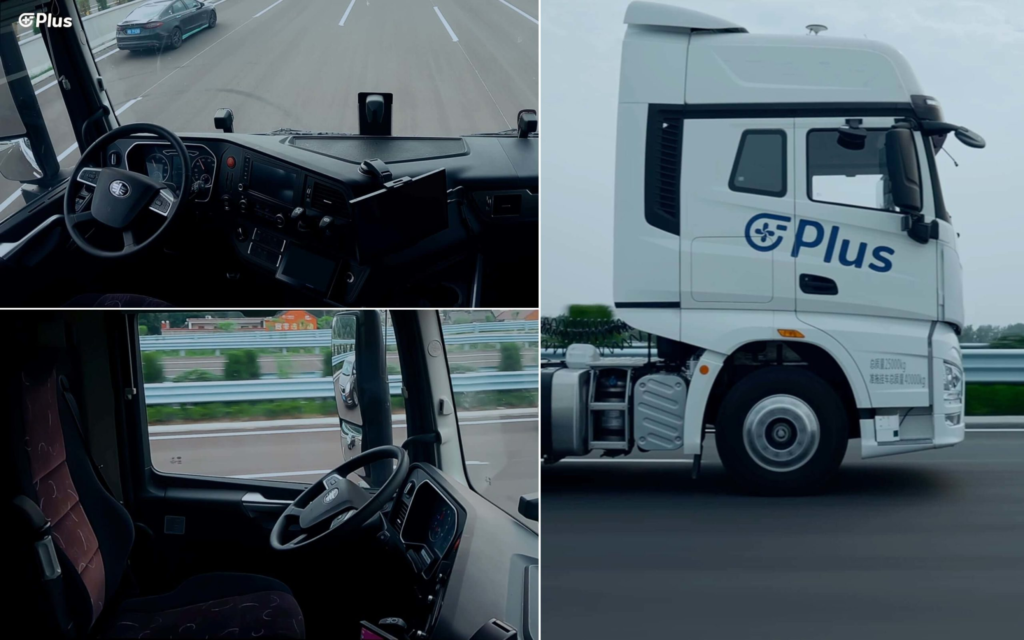Free Commercial Vehicle Driver Level 4 Course (6Months)
Commercial Vehicle Driver Level 4: click here

Brief Job Description
Individuals at this job need to drive safely on the assigned route. Individual needs to have a valid HMV driving Licence and PSV badge. Individual is expected to Drive a commercial vehicle including LCV, pick up trucks, bus, maxi cab, school van, transport vehicles and ensuring safety of passengers/goods as well
as public on the road. This role requires the individual to possess relevant technical skills to handle most of the routine break downs that could likely be encountered while driving long distances and through difficult terrains. The individual is also expected to achieve other key performance parameters like fuel efficiency, on time delivery etc.
Personal Attributes
This job requires the individual to drive for long hours under tiring and demanding physical and traffic conditions. Individual must be dependable and able to take responsibility for the assets (vehicle, goods) and passengers. The individual should be able to communicate effectively as he needs to deal with a variety of people every day.

Work effectively in a team:
Elements and Performance Criteria
Effective communication
To be competent, the user/individual on the job must be able to:
PC1. maintain clear communication with colleagues
PC2. work with colleagues
PC3. pass on information to colleagues in line with organisational requirements
PC4.. work in ways that show respect for colleagues
PC5. carry out commitments made to colleagues
PC6. let colleagues know in good time if cannot carry out commitments, explaining the reasons
PC7. identify problems in working with colleagues and take the initiative to solve these problems
PC8. follow the organisations policies and procedures for working with colleagues
PC9. ability to share resources with other members as per priority of tasks
Knowledge and Understanding (KU)
The individual on the job needs to know and understand:
KU1. the organisations policies and procedures for working withcolleagues, role and responsibilities in relation to this
KU2. the importance of effective communication and establishing goodworking relationships with colleagues
KU3. different methods of communication and the circumstances inwhich it is appropriate to use these
KU4. benefits of developing productive working relationships withcolleagues
KU5. the importance of creating an environment of trust and mutualrespect
KU6. whether not meeting commitments, will have implications onindividuals and the organisation
KU7. different types of information that colleagues might need and theimportance of providing this information when it is required
KU8. the importance of problems, from colleagues perspective andhow to provide support, where necessary, to resolve these

Generic Skills (GS)
User/individual on the job needs to know how to:
GS1. complete well written work with attention to detail
GS2. read instructions, guidelines/procedures
GS3. listen effectively and orally communicate information
GS4. make decisions on a suitable course of action or response
GS5. plan and organise work to achieve targets and deadlines
GS6. check that the work meets customer requirements
GS7. deliver consistent and reliable service to customers
GS8. apply problem solving approaches in different situations
GS9. apply balanced judgements to different situations
GS10. apply good attention to detail
GS11. check that the work is complete and free from errors
GS12. get work checked by peers
GS13. work effectively in a team environment
Practice HSE and security related guidelines:
Elements and Performance Criteria
Communicating potential accident points
To be competent, the user/individual on the job must be able to:
PC1. spot and report potential safety issues while driving
PC2. follow rules and regulations laid down by transport authorities
PC3.. follow company policy and rules to avoid safety, health and environmental problems
Cleanliness and hygiene
To be competent, the user/individual on the job must be able to:
PC4.. ensure cleanliness of ambulance
PC5. escalate issues related to cleanliness and hygiene issues to concern department
PC6.. escalate issues related to hazardous material to concerned authority internal and external
Limit damage to people/client and public
To be competent, the user/individual on the job must be able to:
PC7.. take immediate and effective action to limit the danger or damage, without increasing the danger or threat to yourself or others
PC8. follow instructions or guidelines for limiting danger or damage in respect of equipment on board such as oxygen cylinders.

PC9. escalate the issue immediately if you cannot deal effectively with the danger
PC10.. give clear information or instructions to others to allow them to take appropriate action
PC11. record and report details of the danger in line with operator guidelines
PC12. report any difficulties you have keeping to your organizations health and safety instructions or guidelines, giving full and accurate details
PC13.. check the exhaust as per the recommended guideline and ensure the ambulance is meeting the emission norms. in case not get the ambulance retuned/ adjusted.
PC14. get the waste from routine cleaning, changed spare parts etc. disposed off as per environmental norms
Knowledge and Understanding (KU)
The individual on the job needs to know and understand:
KU1. organization’s instructions or guidelines relating to dealing with and reporting safety and emergency issues
KU2. what action you can take, and are authorized to take, to limit danger
KU3. methods of effective and appropriate communication to let others know about the safety, cleanliness and emergency situations
KU4. where and how to get help in dealing with safety and emergency situations
KU5. how to use appropriate equipment and alarm systems to limit danger
KU6. alternate routes in case of natural calamity, road construction work etc.
Generic Skills (GS)
User/individual on the job needs to know how to:
GS1. to effectively communicate the safety, cleanliness and emergency issues
GS2. keep all the safety equipments in an organized manner so that there is no difficulty to find them
GS3. report potential sources of danger
GS4. follow prescribed procedure to address safety and emergency issues
GS5. learn from past mistakes regarding use of safety and emergency issues
GS6. spot safety and cleanliness issues
GS7. assess impact of hazardous material, activity, incident
Coordinate with depot/ branch office:
Elements and Performance Criteria
Compliance to duty
To be competent, the user/individual on the job must be able to:
PC1.. report to duty on time as per the schedule
PC2.. collect information on daily and weekly route/delivery schedule and special instructions
PC3.. fill details in the log register; for e.g. date, day, time, name, batch number, route to be travelled/goods to be delivered etc.
PC4.. compliance to duty closure procedure on completion of responsibilities for the day
PC5.. deposit passengers personal property/goods delivery note if any
Escalation of problems
To be competent, the user/individual on the job must be able to:
PC6.. informabout accidents, break downs etc. during the day if any and also about any altercation between driver/conductor/assistant and passengers / public / officials
Knowledge and Understanding (KU)
The individual on the job needs to know and understand:
KU1. companys policies on: personnel management, duty reporting procedure and associated MIS compliance

KU2. reporting structure within organization
KU3. problem escalation procedure
KU4. route planning information system if any
Generic Skills (GS)
User/individual on the job needs to know how to:
GS1. fill in the attendance sheet and the requisite details
GS2. fill in complaints pertaining to the vehicle which needs depot/branch officers attention
GS3. keep abreast by reading about new policies at an organization level
GS4. read the goods challan and explain the same to octroi/RTO authorities if need be
GS5. execute task, schedules, and work-loads with co-workers and supervisors
GS6. follow supervisors instructions about the route planning for transporting passengers / delivering goods required
GS7. share work load as required
GS8. assist others who require help
GS9. share knowledge with co-workers/assistant
Assess and ensure road worthiness of the vehicle:
Elements and Performance Criteria
Vehicle road worthiness
To be competent, the user/individual on the job must be able to:
PC1.. check that the vehicle meets basic legal and compliance related requirements as per : the organization guidelines erg rule books of STUs CMVR guidelines from MoRTH and other guidelines issued by Road Transport Authorities like RTOs any other safety, security and environmental guidelines
PC2.. check vehicle service record indicative of any history of technical defects or immediate need for servicing like oil/filter change
PC3.. record any other deviations observed during the trip
Basic technical check before the trip
To be competent, the user/individual on the job must be able to:
PC4.. supervise and ensure all basic technical checks have been carried out as per standard organization check list /procedure
Escalation of technical problem
To be competent, the user/individual on the job must be able to:
PC5.. report actual or possible defects to the senior driver or owner or service supervisor in enough detail so they can diagnose the problem
PC6.. In consultation with owner conclude about the road worthiness of vehicle and if found unfit to decide to use another vehicle.
Knowledge and Understanding (KU)
The individual on the job needs to know and understand:
KU1. companys policies on: road worthiness requirement; basic compliance to technical requirements and standards; safety and hazards
KU2. CMVR guidelines and other specific local regulations
KU3. organization structure
KU4. escalation procedure
Generic Skills (GS)
User/individual on the job needs to know how to:
GS1. Read and understand technical standards of vehicle operation in terms of fuel system and other control systems in vehicle.
GS2. document technical issues pertaining to vehicle
GS3. follow supervisors instructions
GS4. communicate with assistant and other personnel
GS5. when not to use the vehicle due to technical and/or compliance related issues
GS6. how to learn from past mistakes and identify potential problems

Drive safely and efficiently on the assigned route including long distance trips:
Elements and Performance Criteria
Conformance to standard driving practices
To be competent, the user/individual on the job must be able to:
PC1.. conformto standard driving practices covering such as confirm all checks have been carried out for road worthiness of the vehicle. confirm all papers and documents including driving license,vehicle documents and documents related to goods etc are available. start the vehicle and before moving re confirm all gauges are functioning after starting but within few meters of moving to check the brakes. change gear smoothly and in good time; coordinate the change of gears with steering control and
acceleration use the accelerator, steering control and brakes correctly to regulate speed and bring the vehicle to a stop safely coordinate the operation of all controls to manoeuvre the vehicle safely and responsibly in all weather and road conditions in forward gear.In reverse gear to take help of assistant. use the windows, wipers, demisters and climate and ventilation controls so that you can see clearly
monitor and respond correctly to gauges, warning lights and other aids when driving in case of any malfunctioning or breakdown, to immediately attend to the problem by :-stopping the vehicle at a safe place -carrying out a quick diagnostic check -carrying out minor adjustments or temporary repairs if possible -asking for help in case of major problems by accurately reporting the exact nature of problem so that adequate help is made available at all times while driving to practice good driving habits of gear change, acceleration and braking to ensure obtaining maximum fuel efficiency.
Conformance to traffic regulation
To be competent, the user/individual on the job must be able to:
PC2.. conform to state specific traffic regulations such as change lanes safely at appropriate speed and observing traffic conditions overtake other road users legally, safely and by using correct signalling at all times observe the speed and distance in relation to vehicles ahead, behind and on the sides and maintain a safe distance from other vehicles. signal your intentions correctly to other road users within a safe,
systematic routine respond appropriately to all permanent and temporary traffic signals, signs and road markings as well as hand signals of traffic policeman. use indicators and arm signals to signal intentions as per the traffic requirements Use the parking light when stationary, where needed select a safe, legal and convenient place to stop; secure the vehicle safely on gradients using hand brakes and wheel choke
check for oncoming cyclists, pedestrians and other traffic before opening your door remain calm and composed during difficult situations like traffic jam, accidents and strictly avoid any feud with fellow commuters and other public.
General conduct on the road
To be competent, the user/individual on the job must be able to:
PC3.. give preference and right of road usage to children, elderly and differently abled. Comply with any related rules, regulations and practices for handling general public issues as well as show consideration towards stray animals.
Knowledge and Understanding (KU)
The individual on the job needs to know and understand:
KU1. companys guidelines on safe driving practices; system and processes to ensure safe driving
KU2. reporting structure
KU3. problem escalation procedure
KU4. safe driving techniquessuch as avoid over speeding and follow prescribed limits maintain safe distance from other vehicles avoid pot holes, stones, other strewn objects in case of bridges and underpasses, observe and avoid driving when water level is above danger mark observe movement of pedestrians to avoid collision observe movement of stray animals to avoid collision
KU5. alternate routes in case of natural calamity, road construction work etc.
KU6. troubleshooting techniques in the event of technical problems like changing wheels using jack
KU7. traffic regulations

KU8. elements of good driving habits for obtaining fuel efficiency : avoid clutch riding avoid frequent changing of gears avoid frequent braking avoid over speeding avoid idling of engine beyond reasonable limit avoid high idling speed setting in engine ensure there is no brake binding obtain right grade of fuel from authorized outlets only ensure correct quantity of fuel received as per bill
Generic Skills (GS)
User/individual on the job needs to know how to:
GS1. to communicate effectively in local language and also preferably basic spoken Hindi and basic written English
GS2. communicate information in a format that meets the requirements
GS3. seamless coordination with colleagues
GS4. assist others who require help
GS5. take help from Assistant or junior driver
GS6. keep oneself updated with the new vehicle technologies and functionalities
GS7. gain knowledge/ experience from working on different routes
GS8. when on long distance/ inter state schedule , plan the trip keeping in mind regulations like no entry times and municipal limits in urban areas
GS9. plan and drive based on traffic and road condition using radio links/navigation aids where available
GS10. plan safe handling of life and materials as per the exact load being transported e.g.special people groups like children, elderly, differently abled or perishable,hazardous goods
GS11. fitness of vehicle for safe driving
GS12. breakdown condition
GS13. accident and emergency situations and medical emergencies
GS14. assess the problem, evaluate the possible solution(s) and use an optimum /best possible solution(s)
GS15. identify immediate or temporary solutions to resolve delays and crisis situations
GS16. manage children, aged and differently abled individuals
GS17. effective tackling of passengers and public who may be stressed, frustrated, confused, or angry
GS18. build passenger friendly work environment and use customer centric approach to resolve crisis
GS19. resolve conflict while dealing with public
GS20. how to learn from past mistakes to resolve technical and non-technical problems
Assessment Guidelines:
- Criteria for assessment for each Qualification Pack will be created by the Sector Skill Council. Each Element/ Performance Criteria (PC) will be assigned marks proportional to its importance in NOS. SSC will also lay down proportion of marks for Theory and Skills Practical for each Element/ PC.
- The assessment for the theory part will be based on knowledge bank of questions created by the SSC.
- Assessment will be conducted for all compulsory NOS, and where applicable, on the selected elective/option NOS/set of NOS.
- Individual assessment agencies will create unique question papers for theory part for each candidate at each examination/training center (as per assessment criteria below).
- Individual assessment agencies will create unique evaluations for skill practical for every student at each examination/ training center based on these criteria.
- To pass the Qualification Pack assessment, every trainee should score the Recommended Pass % aggregate for the QP.




